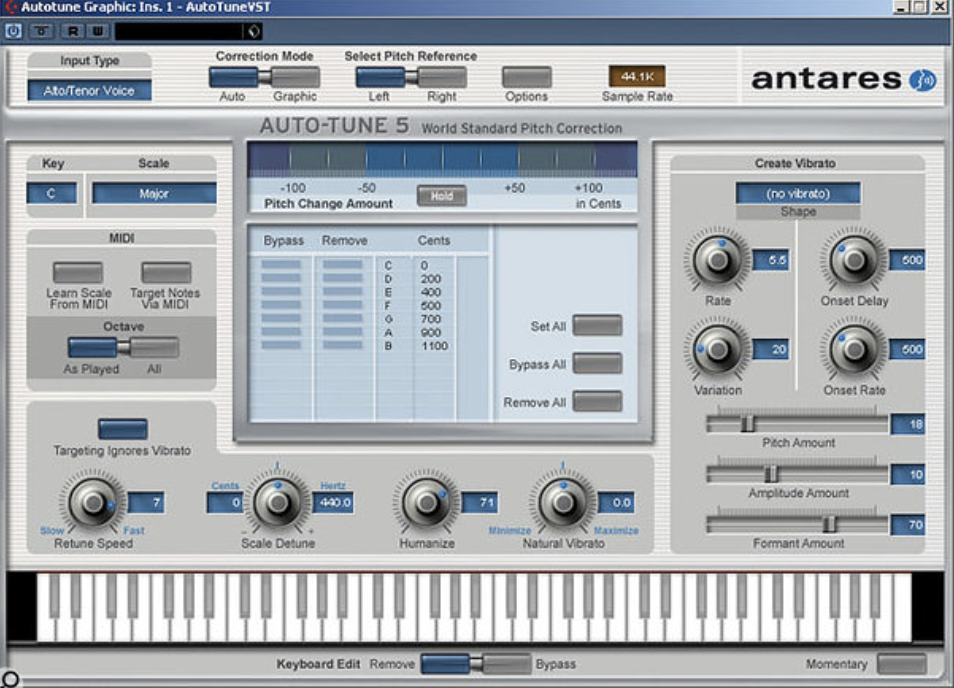
Screen shot of the auto-tune version 5 interface
In 1996, research engineer Andy Hildebrand invented Auto-Tune. The technology originated as musical software meant to make singers sing in tune (Mistry 2021, 00:03:29). The musical software involved several mathematical equations used to measure and alter the pitch of a singer’s vocals. Auto-Tune works by determining the major periodic frequencies of the signal being used by the auto pitch-correction. Auto-Tune technology takes these frequencies and adjusts them to fit the periodicity of the chosen musical scale (Danielson 2017, 13). Overall, the technology changes the periodic frequency of the sound wave but leaves the other measures of the sound wave intact to produce a seamless vocal sound void of natural human characteristics like tonal sliding (Danielson 2017, 13). As new computer software, Auto-Tune helped drastically decrease the time it took in the past to get a suitable vocal take. According to producer and musical engineer Ken Scott, singers would have to spend extensive time in the studio trying to correct their pitch. Auto-Tune roughly cut studio time spent on pitch correction down from two weeks to half a day (Mistry 2021, 00:06:16).
While Auto-Tune was widely used by major record labels in the US, many producers sought to keep the technology a secret fearing that Auto-Tune would be seen as a means of “cheating” and indicate that their singer lacked natural talent (Mistry 2021, 00:10:18). Mark Taylor, the musical producer for Cher during the release of her album Believe, lied in an interview stating that the distorted sound of Cher’s vocals was created with a vocoder pedal (Sillitoe, 1999). In reality, the pitch of Cher’s vocals is being altered by Auto-Tune. In “Believe” the pitch correction dial in the Auto-Tune software is turned all the way to zero creating instantaneous pitch changes (Mistry 2021, 00:08:40). With this pitch alternation, the vocals are intentionally made to sound unnatural, robotic, and alien. Auto-Tune being used as an instrument to intentionally create a creative distorted sound was deemed the “Cher effect” (Danielson 2017, 13).